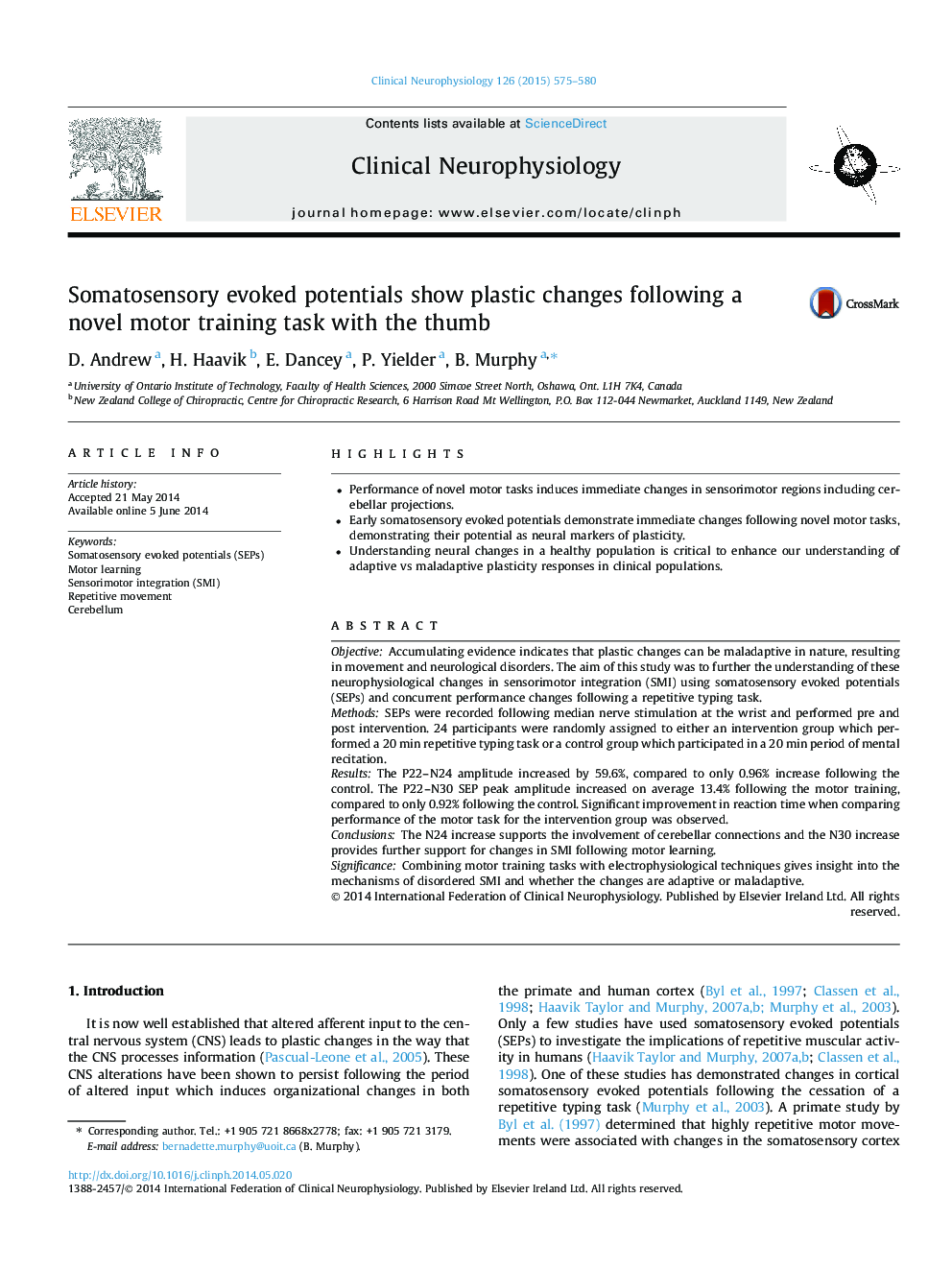| Article ID | Journal | Published Year | Pages | File Type |
|---|---|---|---|---|
| 3043718 | Clinical Neurophysiology | 2015 | 6 Pages |
•Performance of novel motor tasks induces immediate changes in sensorimotor regions including cerebellar projections.•Early somatosensory evoked potentials demonstrate immediate changes following novel motor tasks, demonstrating their potential as neural markers of plasticity.•Understanding neural changes in a healthy population is critical to enhance our understanding of adaptive vs maladaptive plasticity responses in clinical populations.
ObjectiveAccumulating evidence indicates that plastic changes can be maladaptive in nature, resulting in movement and neurological disorders. The aim of this study was to further the understanding of these neurophysiological changes in sensorimotor integration (SMI) using somatosensory evoked potentials (SEPs) and concurrent performance changes following a repetitive typing task.MethodsSEPs were recorded following median nerve stimulation at the wrist and performed pre and post intervention. 24 participants were randomly assigned to either an intervention group which performed a 20 min repetitive typing task or a control group which participated in a 20 min period of mental recitation.ResultsThe P22–N24 amplitude increased by 59.6%, compared to only 0.96% increase following the control. The P22–N30 SEP peak amplitude increased on average 13.4% following the motor training, compared to only 0.92% following the control. Significant improvement in reaction time when comparing performance of the motor task for the intervention group was observed.ConclusionsThe N24 increase supports the involvement of cerebellar connections and the N30 increase provides further support for changes in SMI following motor learning.SignificanceCombining motor training tasks with electrophysiological techniques gives insight into the mechanisms of disordered SMI and whether the changes are adaptive or maladaptive.
